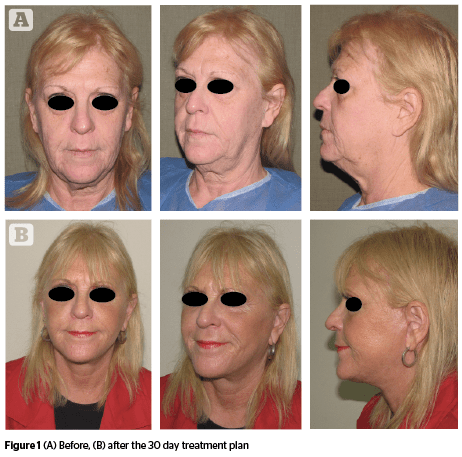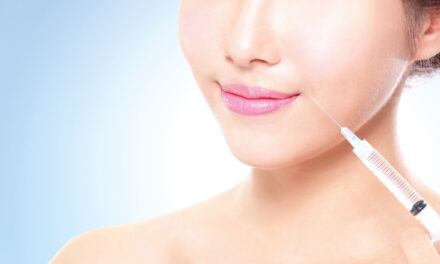Fernando Felice outlines his individual approach to full face rejuvenation, including the use of CO2 resurfacing as well as hyaluronic acid and botulinum toxin injections.
An attractive face respects facial proportions and celebrates signs of youth. When we evaluate the ageing process in a patient, we must bear in mind that it is multifactorial, and our analysis must imply a multilayer ageing diagnosis. If we analyze the ageing process in each anatomical layer we will arrive at the correct diagnosis and, consequently, an accurate treatment plan. Only then can we treat the ageing skin, the subcutaneous fat, the muscular plane, and in some occasions improve the aspect of bone resorption. To achieve this, we must train ourselves to see past the outer-most layer of skin, and identify the level of ageing at each anatomical layer.
We all know how the skin ages, and the characteristics that ageing skin possesses. But there is a detail that many overlook — knowing which patient requires a surgical procedure and which patient can obtain a good result with mini-invasive treatments.
Surgery can reposition tissue and remove skin and fat excesses created by the ageing process (jowls, submandibular fat). However, we must then look to aesthetic medicine to improve the condition of the skin, treat dynamic and thin wrinkles, as well as restore the volume loss of fat tissue. This is why I use the following tools to complement my surgical procedures: CO2 lasers, intense pulsed light (IPL), platelet rich plasma (PRP), hyaluronic acid (HA), and botulinum toxin. Other tools may be included, but these are the core treatments I turn to time and time again.
Case analysis
We can analyze the case of a female patient, 64 years old who inquired about facial ageing. A pronounced ageing across the face can be observed (Figure 1). But if we analyze each layer separately we will better understand her ageing process. These layers and the impact of ageing are as follows:
- Skin: Skin flaccidity, facial folds, thin wrinkles, and sharp grooves
- Subcutaneous tissue: Eyelid bags, marked tear troughs, loss of volume in cheeks, loss of lip contour, depressed lip corners, submandibular fat, and loss of facial contour
- Muscular layer: frontal wrinkles, crow’s feet wrinkles, frowning wrinkles, and bunny lines
- Bone layer: Periorbital bony resorption.
Treatment options

The first step taken with this patient was a surgical procedure: cervical-facial lifting with minimal incisions and upper and lower blepharoplasty. The cervical-facial lifting was performed using precapillary, preauricular, and retroauricular incisions. We must reposition the SMAS to the correct place, ensuring a complete improvement of the platysmal bands and jowls. We follow this procedure with submandibular fat lipoaspiration. With this treatment we reposition everything to, or as close to, its original position and only then do we turn to more subtle treatments to compliment our results. If we fail to reposition the sagging tissue, we cannot expect to achieve satisfactory results from any of the supplementary treatments described below.
For the skin
Fractional CO2 laser
Treatment should be performed with great care and evaluating the patient’s skin characteristics to avoid injuries or dyschromia is recommended. Perform both a superficial and deep treatment of the skin. In this way, one month post treatment we can achieve a diminishing or disappearance of many thin wrinkles, as well as the irregular appearance of the skin and facial pores. Additionally, due to the deeper layer treatment, at 4 to 6 months post-treatment we will see an improvement in the cutaneous tension.
Platelet rich plasma
This treatment can be applied on any patient regardless of their age and will not generate any allergic reactions as it is created from the blood of the patient. Intradermal PRP naturally stimulates the production and regeneration of collagen, elastin, and other components of the skin that will cause chemical and structural changes in the dermis resulting in a younger, smoother looking skin.
Mesotherapy with hyaluronic acid
This technique is sometimes referred to as a ‘skinbooster’ and complements the results from PRP. The goal is to place hyaluronic acid in the intradermal layer, thus contributing to profound and long-lasting skin hydration. We can treat areas such as the face, neck, decollete, lips, and hands. The result is soft, smooth skin with an even gloss and tightness.
Subcutaneous cellular tissue
Hyaluronic acid fillers
These products are used to bring back the volume lost to ageing and to shape specific areas of the face. Every time we work on a specific facial area we must determine if that area is a positive or negative feature of the face. For instance, when working on the lips, we must determine if the lips even require fillers and determine whether we will see any benefit to the patient by injecting.
It is always ideal to work with good quality products, ensuring good results and prolonged durability. We must also select the best product for each area and know how to choose which product will be the best to treat the cheeks, ears, lips, jawline, grooves, and thin wrinkles.
In the muscular level
Botulinum toxin
This will achieve muscular relaxation in the area applied. It is not only about applying botulinum toxin as a book dictates or in a theoretical way, we must learn to implement it in a dynamic manner in order to achieve natural results.
Botulinum toxin is often used on the superior facial third and we must view the frontal muscle as the most important and delicate as it is the only elevator in this area. The orbicularis oculi muscles must not only be treated to eliminate crow’s feet wrinkles, but also to elevate the outer tail of the eyebrows.
Other muscles to treat in this area are the corrugator muscles, procerus, and levator labii superioris alaeque nasi muscle.
I consider a good result is one that looks natural, and to achieve this we must know how to identify in each patient the specific muscle to be treated and know how to interpret its muscular force. Additionally, it is not only important to know where to apply each point of toxin, but also knowing the correct amount of units to apply.
With this approach, we realize that in order to treat the face and neck, each area must be treated in accordance with its individual necessities.
Of course many patients will not want to undergo so many treatments, or may not be able to afford them. We must also know how to advise them in which treatments to prioritize and how to carry them out separately over several months. We should always work with high quality products and technologies, ensuring the patient’s safety and long lasting results.
Treatment plan
The treatments performed on the 64 year-old female case study patient are as follows:
- Day 0: Cervical-facial lifting and superior and inferior blepharoplasty. The face lifting treatment is performed with a pre-auricular, retrotragal, and retro-auricular incision
- Day 7: Fractional CO2 laser (CO2RE, Syneron Candela, Irvine, CA) — to treat the skin’s surface, as well as mid and deep dermal levels. First session: fusion full face treatment, pattern size: 7.3 x 7.3, fractional coverage: 20%, ring size: 3, ring (mj): 45, core (mj): 50. Second session: light full face treatment, pattern size: 7.3 x 7.3, fractional coverage: 50%, ring size: 3, ring (mj): 60
- Day 7: Platelet rich plasma in the face, neck, and decollete (immediately after CO2 laser)
- Day 14: Skinbooster with 1 syringe of 1 ml of Juvéderm® Hydrate® (Allergan plc, Dublin, Ireland) in face, neck, and decollete
- Day 21: Botulinum toxin injections. Frontal muscle (5 UI/side), corrugator supercilii (7 UI/side), procerus (4 UI), orbicularis oculi muscle (14 UI/side), and levator labii superioris alaeque nasi muscle (2.5 UI/side)
- Day 30: Hyaluronic acid filler with Juvéderm® Voluma® (1 ml) in each cheek (points Ck1, Ck2, Ck3 of Mauricio De Maio’s MD CODES®), and Juvéderm® Volbella® 1 ml in the lips (MD CODES® Lp1, Lp3, Lp5, Lp6)
- Day 30: Platelet rich plasma (second session).
With this treatment plan, we achieved an excellent complement of both surgical and minimally invasive procedures. Each individual treatment has its own indications, we must know how to point them out as well as the order in which to tackle each of them. It is also very important to understand we guide the patients in the search for good, natural results. It is important to say ‘no’ when our patient’s request will not lead to a satisfactory result.





